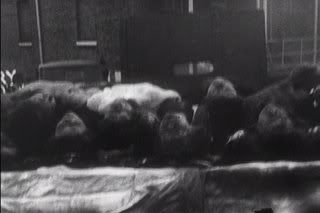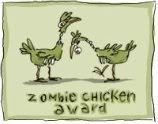
What happens to a city, to its people, when an atomic bomb detonates in the atmosphere above it? In the 1960s, this question probably seemed pretty pressing. Peter Watkins, fresh off the success of Culloden, convinced the BBC that he should be allowed to shoot a nuclear war film, one that would show the effects of a nuclear attack on British soil. When he handed in the final film, the channel refused to broadcast it--but, Watkins claims, only after secretly showing it “to senior members of the Home Office, the Ministry of Defence, the Post Office (in charge of telecommunications), a representative of the Military Chiefs of Staff, and Sir Burke Trend, Secretary to Harold Wilson’s Cabinet.”
Using documented evidence about the effects of bombing on Hiroshima, Nagasaki, Dresden, and other European towns firebombed during the War, Watkins was able to create an extremely realistic film detailing the violent effects of a nuclear attack on British soil. Like most of his work, it’s shot like a documentary, filled with amateur actors and realistic effects. The War Game shows many things that the BBC thought people weren’t ready to see: blinded children; the degrading effects of radiation poisoning; terminal patients executed by police officers, in what is both an act of charity and necessity; food riots; suffering; gruesome death.

At first, The War Game seems too much a document of its time. The fear of nuclear war has, thankfully, abated, and the black and white footage and dour narration makes the film seem almost campy. Once you get past that, though, it’s remarkable how much detail Watkins goes into. While certainly he dwells on the grizzly physical aspects of the attack, just as much (or more) time is spent on the moral problems, most of which are caused by logistics. In the case of an attack, we learn, the British government simply lacks the resources to relocate such a large part of its population; after the attack, they lack the capacity to treat and feed the survivors.
Obviously Watkins is a pacifist, and the point of his movie is to scare the living hell out of his audience. And it is scary, since every instance that Watkins depicts in his faux-documentary had already happened in one of the Axis cities bombed during the War. His reliance on facts, then, makes the film all the more terrifying, and stops him from making a simple and derivatively alarmist piece. The War Game won the Academy Award for Best Documentary Feature in 1966.

Project X, the Canadian distributors who (with New Yorker Films) have made a mission of making Watkins’ work available in North America, saw fit to release The War Game with Culloden, Watkins’ first major work. Combined, the two films run only two hours, and so the pairing is sensible--even if the way they’ve positioned the two films out of sequence seems somewhat illogical.
The 1746 Battle of Culloden was the last battle of the Jacobite uprising, in which the British army smashed the Highlanders and chased Bonnie Prince Charlie off of their land. We learn (if we didn’t know already--my Scottish history is rusty, but fortunately I've read Waverly) that the battle was an extremely bloody affair, with the Highlanders losing 25 men for each slain British soldier. Culloden first documents the poor planning and suicidal incompetence of the Highland leaders before turning to the cold-bloodedness of their British rivals.

In what became Watkins’ trademark style, Culloden is shot as a documentary. Some viewers may find this hard to grasp--Watkins doesn’t portray the battle as a recreation, but simply acts as though there was a documentary film crew present at the battle. Nothing is done to explain things any further. Watkins used non-actors to fill the speaking roles, just as he would later do in The War Game and Punishment Park. The lower-class Highlanders even speak in Gaelic, while Bonnie Prince Charlie has a French accent.
Using the documentary style, Watkins is able to interview the personalities involved, and to try to give the viewer some idea about how the actual battle went down. On Watkins’ website, he says “This was the 1960s, and the US army was ‘pacifying’ the Vietnam highlands. I wanted to draw a parallel between these events and what had happened in our own UK Highlands two centuries earlier, including because our knowledge of what took place after ‘Culloden’ was basically limited to an exotic image of ‘Bonnie Prince Charlie’ on the label of a Drambuie whiskey bottle.” He does this by portraying the battle as realistically as possible, and by focusing on the grim realities of the War, stripping away all the romantic nonsense that historic battles always end up wearing.
After the Highlanders are slaughtered, the British heroically bayonet all the wounded, and have the survivors either executed (usually hanged, and then drawn and quartered) or sent to Barbados as indentured servants (read: slaves). Hardly the high water-mark for English compassion.
The Project X/New Yorker release is nothing special, but it contains both films and commentaries, though not (unfortunately) from Watkins himself. Watkins really did produce films unlike any you've seen before, so film fans should check it out.










1 comment:
Both films sound incredibly interesting - particularly "The War Game" which i'll admit to never having heard of before your review. Sounds like something to definitely check out.
Post a Comment